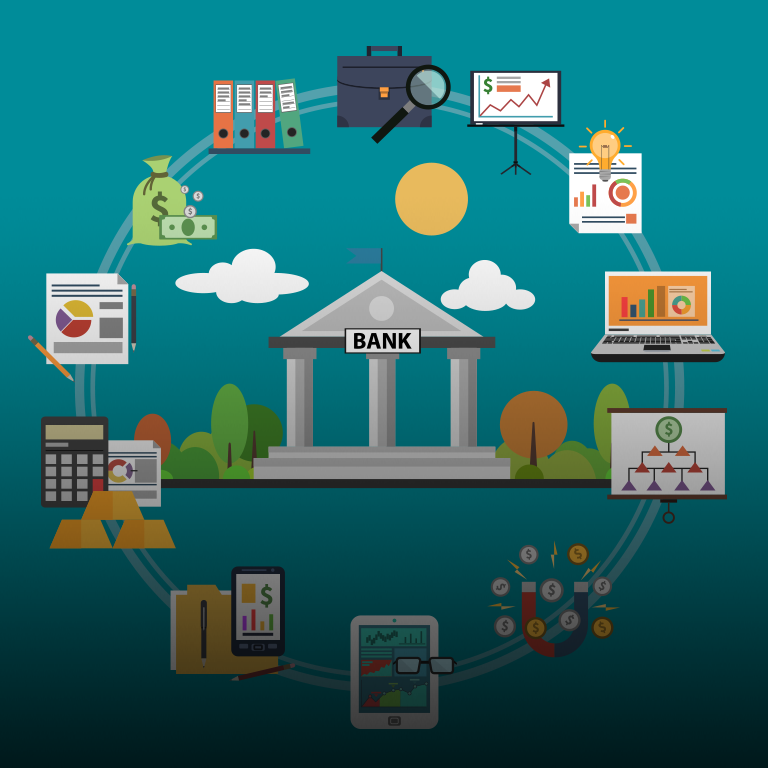Introduction:
In the heart of the banking industry’s digital transformation lies the bedrock of core banking applications. This article takes a human-centric approach to unravel the significance, evolution, and transformative impact of core banking applications. Beyond the technical jargon, the focus is on demystifying these applications and shedding light on how they redefine the banking experience, streamline operations, and empower financial institutions to meet the evolving needs of customers in a rapidly changing world.
Understanding Core Banking Applications:
Core banking applications serve as the central nervous system of a financial institution. They are comprehensive software solutions that integrate and streamline the core functions of banking operations, including transaction processing, customer account management, loan processing, and more. These applications provide a unified platform that enables banks to deliver a seamless and efficient banking experience to customers while optimizing internal processes.
- Transaction Processing: At the core of core banking applications is their ability to handle transaction processing. From simple fund transfers to complex financial transactions, these applications ensure accuracy, security, and real-time processing, facilitating the smooth flow of money within the banking system.
- Customer Account Management: Core banking applications centralize customer account management, allowing banks to maintain a holistic view of each customer’s relationship with the institution. This includes account balances, transaction history, and other relevant details. The seamless integration of customer data enhances personalized service delivery.
- Loan and Credit Processing: Banks rely on core banking applications for efficient loan and credit processing. These applications automate the loan origination process, from application submission to approval and disbursement. The integration of credit scoring and risk assessment tools ensures a robust and standardized approach to lending.
- Integrated Financial Reporting: Core banking applications provide comprehensive financial reporting capabilities. Banks can generate real-time reports on various aspects of their operations, helping them make informed decisions, comply with regulatory requirements, and communicate transparently with stakeholders.
Evolution Of Core Banking Applications:
The evolution of core banking applications mirrors the broader evolution of the banking industry, influenced by technological advancements, regulatory changes, and shifting customer expectations.
- Transition from Legacy Systems: In the early days of banking automation, legacy systems were predominant. These systems were often siloed, making it challenging to provide a unified customer experience. The evolution of core banking applications involved a transition from these legacy systems to integrated solutions that could offer a seamless and interconnected banking experience.
- Adoption of Cloud Technology: The adoption of cloud technology marked a significant leap forward in the evolution of core banking applications. Cloud-based solutions offer scalability, flexibility, and cost-efficiency. They enable banks to adapt to changing market conditions, reduce infrastructure costs, and enhance accessibility for both customers and bank staff.
- Open Banking and APIs: The rise of open banking and the use of Application Programming Interfaces (APIs) have transformed the landscape of core banking applications. Open banking fosters collaboration between financial institutions and third-party providers, allowing for the creation of innovative and interconnected financial services that go beyond the traditional offerings of a single bank.
- Enhanced User Experience: The evolution of core banking applications prioritizes user experience. Modern interfaces are designed with a focus on simplicity, intuitiveness, and accessibility. User-friendly dashboards empower bank staff to navigate complex systems efficiently, while customers experience a more seamless and enjoyable banking journey.
- Integration of Artificial Intelligence (AI) and Analytics: The integration of AI and analytics has become a cornerstone of advanced core banking applications. AI-powered algorithms analyze vast amounts of data to provide personalized insights, detect fraudulent activities, and improve decision-making processes. Predictive analytics also play a crucial role in anticipating customer needs and market trends.
The Human Experience In Core Banking Applications:
Amidst the intricate algorithms and data flows, the human experience remains central to the success and adoption of core banking applications.
- Customer-Centric Design: Modern core banking applications prioritize customer-centric design. The interface is crafted to be user-friendly, providing customers with intuitive tools to manage their accounts, make transactions, and access a range of financial services seamlessly. This focus on the customer experience enhances satisfaction and loyalty.
- Empowering Bank Staff: Core banking applications are designed not only to serve customers but also to empower bank staff. User-friendly interfaces, intuitive workflows, and real-time data access enable bank employees to serve customers more efficiently, address queries promptly, and focus on delivering value-added services.
Challenges And Considerations:
The adoption of core banking applications is not without challenges. Financial institutions must navigate these considerations to ensure successful implementation and sustained benefits.
- Legacy System Integration: Many banks still operate on legacy systems, and transitioning to modern core banking applications requires careful integration to avoid disruptions. The coexistence and integration of legacy and modern systems pose challenges that need to be addressed through thoughtful planning and execution.
- Data Security and Compliance: As core banking applications handle sensitive financial data, ensuring robust data security measures is paramount. Financial institutions must comply with regulatory frameworks, implement encryption, access controls, and other security protocols to safeguard customer information and maintain trust.
- Scalability and Flexibility: Financial institutions operate in a dynamic environment, and their needs evolve over time. Core banking applications must be scalable to accommodate growth, flexible enough to adapt to changing regulatory requirements, and capable of integrating emerging technologies seamlessly.
- User Training and Change Management: Successful implementation of core banking applications requires comprehensive user training and effective change management strategies. Bank staff need to be equipped with the skills to navigate the new systems, and organizational culture must embrace the shift towards a more digital and customer-centric approach.
Evolving Trends In Core Banking Applications:
Looking ahead, several trends are poised to shape the trajectory of core banking applications, influencing how financial institutions leverage technology to enhance their operations and customer offerings.
- Decentralized Finance (DeFi) Integration: The integration of decentralized finance (DeFi) principles into core banking applications is an emerging trend. This involves leveraging blockchain technology to create decentralized and interoperable financial services, expanding the scope of traditional banking offerings.
- Advanced Biometric Authentication: Enhanced biometric authentication methods, such as facial recognition and fingerprint scanning, are becoming integral to core banking applications. These technologies enhance security and provide a frictionless authentication experience for customers.
- Hyper-Personalization through AI: AI-driven hyper-personalization is expected to become more sophisticated. Core banking applications will leverage AI to analyze customer behavior, preferences, and financial patterns, enabling banks to offer personalized products, services, and recommendations.
- Enhanced Collaboration with FinTech: Collaboration between traditional banks and FinTech firms is expected to intensify. Core banking applications may integrate FinTech innovations, offering customers access to a broader range of financial products and services. These collaborations enhance agility, innovation, and competitiveness in the financial industry.
In Conclusion:
Core banking applications are not just technological solutions; they represent a fundamental shift in how financial institutions operate and engage with their customers. As these applications continue to evolve, the human experience remains paramount. Customer-centric design, empowering bank staff, and a commitment to solving real-world financial challenges contribute to the success of core banking applications.
Beyond the algorithms and data flows, the essence of core banking applications lies in their ability to redefine the banking experience. The journey through core banking applications is a journey toward financial inclusion, innovation, and resilience. The future of core banking applications holds promises of increased integration, enhanced capabilities, and a continued focus on delivering tangible benefits to financial institutions and their customers around the globe.





